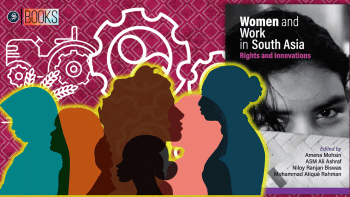5 books to read for International Workers’ Day

International Workers' Day, or in more colloquial terms May Day, is an observance of the blue-collared, indefatigable, working-class individuals that has taken root from the labour movements of the late 19th century, carried out to demand an 8-hour workday. The 1st of May is rich in its history and offerings, making it significant for readers and allies to learn about this momentous day, the amendments that have been made and those that still need to be made.
The Communist Manifesto
Karl Marx and Friedrich Engels
Penguin Classics, 2002
To recognise the plight of labourers in this contemporary world, and the politics behind the capitalistic society, it is necessary to have an insight into the background of the entire concept. Despite its controversial discourse, The Communist Manifesto was the earliest publication discussing the dichotomy of class struggle and the exploitation faced by the then 'proletariats' at the hands of the ruling class. Marx and Engels believed that capitalism was the inherent way to create disparity among divisions, and only the abolishment of the idea of private property could originate a classless society. This book has had an emotional impact on the socio-political movements surging all around the globe.
The Incomplete, True, Authentic, and Wonderful History of May Day
Peter Linebaugh
PM Press, 2016
The Incomplete, True, Authentic, and Wonderful History of May Day by Peter Linebaugh would be an appropriate facilitator for beginners. It is a critical analysis of the history of May Day and its contribution to modern-day politics and economic justice. During the ancient period of civilization, May Day was commemorated as a day of love, light and respect. Historian Peter Linebaugh compares this previous tradition of the workers to May Day's celebration as a holiday, in attribution to the movement prompted by the political dimensions of the 19th century. It also covers the hardships of labourers worldwide, giving it an all-encompassing view.
Women and Work in South Asia: Rights and Innovations
Amena Mohsin and ASM Ali Ashraf
The University Press Limited, 2022
Eloquently written in a research study manner, Women and Work in South Asia is a conversation on the predicament of female workers and the nature of their employment situations. This book is divided into 13 chapters, each handled by a different contributor. Concentrating on women workers from Bangladesh, Nepal, India and Pakistan, Women and Work in South Asia also tackles the advancement of individual corporate sectors due to the involvement of women workers and how it could be used for further opportunities. The research results also point to the hazardous environments in both the formal and unofficial sectors, centering women workers from home and abroad, from the hills and the plains, the rural and the urban, and lastly, in migration.
No Logo: Taking Aim at the Brand Bullies
Naomi Klein
Vintage Canada, 2000
The central subject matter of No Logo by Naomi Klein definitely hits home, considering the invigorating debates on the exploitation of Bangladeshi garment workers through the agency of popular, global fashion brands. Klein inspects the rise of global corporate branding and the evil consumption culture of workers and the environment. According to her, the development of corporate branding has resulted in a move away from conventional manufacturing sectors and turned towards companies that concentrate on building and promoting brands. She demonstrates how, as businesses want to outsource labour and reduce expenses in order to increase profits, this change has had a diverging impact on both employees and communities. There is again the impact of these fashion brands on the environment, which by any means, is hardly sustainable.
Labour Law of Bangladesh
Mohammad Imam Hossain
Morshed Law Book House, 2019
An obscure addition to the list, this book or rather, legal encyclopedia would be a source of enlightenment for anyone intrigued by the labour law and constitution of Bangladesh. It comes in different segments, reviewing individual industrial laws in each chapter and marking their current or past amendments. Although the contents of this book might not be as fascinating as some other substitutions, it is an absolute requirement for readers, researchers, and enthusiasts in this field of study, especially in the Bangladeshi context.
Nur-E-Jannat Alif is a Gender Studies major and part-time writer, who dreams of authoring a book someday. Find her at @literatureinsolitude on Instagram or send her your book/movie/television recommendations at [email protected].

 For all latest news, follow The Daily Star's Google News channel.
For all latest news, follow The Daily Star's Google News channel. 







Comments